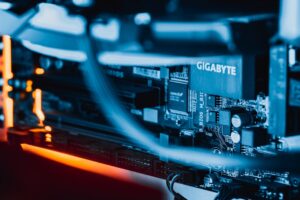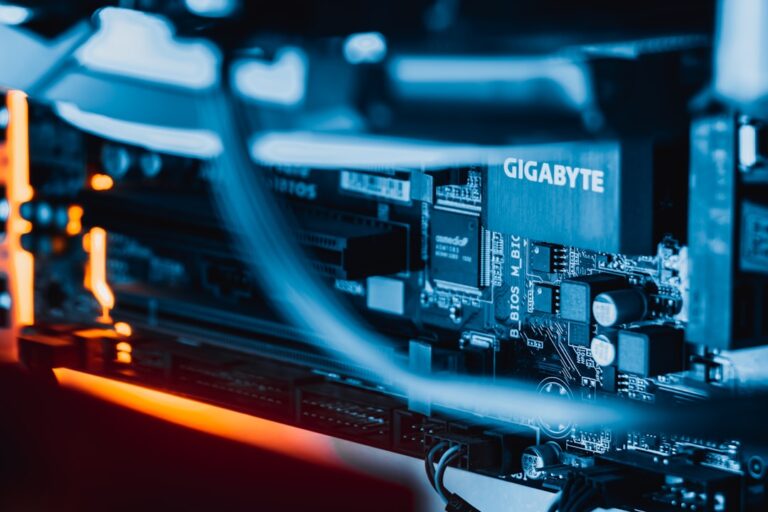Grid computing is a distributed computing model that harnesses the power of multiple interconnected computers to work collaboratively on complex tasks. This approach allows organizations to utilize resources that are geographically dispersed, effectively pooling together computing power, storage, and data management capabilities. Unlike traditional computing systems that rely on a single machine or a cluster of machines in close proximity, grid computing can span vast distances, connecting computers across different locations and networks.
This model is particularly advantageous for tasks that require significant computational resources, such as scientific simulations, data analysis, and large-scale processing. At its core, grid computing operates on the principle of resource sharing. It enables organizations to leverage idle processing power from various machines, transforming them into a cohesive unit capable of tackling demanding workloads.
The architecture of grid computing typically involves a middleware layer that facilitates communication and resource management among the participating nodes. This middleware is crucial for ensuring that tasks are efficiently distributed and that resources are utilized optimally. By enabling seamless collaboration among diverse systems, grid computing fosters an environment where organizations can achieve higher levels of performance and innovation.
Key Takeaways
- Grid computing is a form of distributed computing that involves coordinating and sharing resources across multiple computers to solve complex problems.
- The benefits of grid computing include cost savings, increased processing power, improved scalability, and enhanced collaboration.
- Implementing grid computing in your organization requires careful planning, investment in infrastructure, and training for staff.
- To maximize efficiency with grid computing, organizations should prioritize workload management, security, and monitoring of system performance.
- Overcoming challenges in grid computing involves addressing issues such as data security, interoperability, and managing diverse workloads.
Benefits of Grid Computing
The advantages of grid computing are manifold, making it an attractive option for organizations across various sectors. One of the most significant benefits is cost efficiency. By utilizing existing hardware and software resources, organizations can minimize the need for substantial investments in new infrastructure.
This is particularly beneficial for research institutions and universities that often operate under tight budgets. Instead of purchasing expensive supercomputers, these entities can create a grid using their existing computers, thereby maximizing their return on investment. Another key benefit is scalability.
Grid computing allows organizations to easily scale their operations by adding more nodes to the grid as needed. This flexibility is essential in today’s fast-paced business environment, where workloads can fluctuate dramatically.
This on-demand scalability ensures that organizations can respond swiftly to changing demands, maintaining productivity and efficiency.
Implementing Grid Computing in Your Organization

Implementing grid computing within an organization requires careful planning and execution. The first step involves assessing the specific needs and objectives of the organization. Understanding the types of workloads that will be processed on the grid is crucial for determining the appropriate architecture and resources required.
Organizations should conduct a thorough analysis of their existing infrastructure to identify potential nodes that can be integrated into the grid. This assessment will help in creating a roadmap for implementation. Once the assessment is complete, organizations must select suitable middleware solutions that facilitate communication and resource management across the grid.
There are several options available, ranging from open-source solutions like Globus Toolkit to commercial offerings that provide enhanced support and features. The choice of middleware will depend on factors such as compatibility with existing systems, ease of use, and the specific requirements of the organization. After selecting the middleware, organizations should focus on establishing robust security protocols to protect sensitive data and ensure compliance with relevant regulations.
Maximizing Efficiency with Grid Computing
| Metrics | Value |
|---|---|
| Number of Nodes | 100 |
| Processing Power | 1.21 petaflops |
| Energy Efficiency | 95% |
| Utilization Rate | 80% |
To maximize efficiency in grid computing, organizations must adopt strategies that optimize resource utilization and enhance performance. One effective approach is to implement load balancing techniques that distribute workloads evenly across the available nodes. Load balancing ensures that no single node becomes a bottleneck while others remain underutilized.
By dynamically allocating tasks based on the current load and processing capabilities of each node, organizations can significantly improve overall throughput. Additionally, monitoring and analytics play a vital role in maximizing efficiency. Organizations should invest in tools that provide real-time insights into resource usage, performance metrics, and potential issues within the grid.
By analyzing this data, organizations can identify patterns and trends that inform decision-making processes. For example, if certain nodes consistently underperform or experience high latency, organizations can take proactive measures to address these issues before they impact productivity.
Overcoming Challenges in Grid Computing
Despite its numerous advantages, grid computing is not without challenges. One of the primary obstacles organizations face is managing the complexity of distributed systems. Coordinating multiple nodes across different locations can lead to issues related to network latency, data consistency, and fault tolerance.
Organizations must implement robust strategies to address these challenges, including establishing clear communication protocols and redundancy measures to ensure continuity in case of node failures. Another significant challenge is security. The distributed nature of grid computing makes it inherently more vulnerable to cyber threats compared to traditional centralized systems.
Organizations must prioritize security by implementing encryption protocols for data transmission and storage, as well as robust authentication mechanisms to control access to resources.
Best Practices for Grid Computing

To ensure successful implementation and operation of grid computing systems, organizations should adhere to best practices that promote efficiency and reliability. One such practice is establishing clear governance structures that define roles and responsibilities for managing the grid environment. This includes appointing dedicated personnel who oversee resource allocation, performance monitoring, and security management.
Another best practice involves fostering collaboration among stakeholders involved in grid computing initiatives. Engaging users from different departments or research teams can lead to a better understanding of their specific needs and how they can leverage grid resources effectively. Regular training sessions and workshops can also help users become more proficient in utilizing grid computing tools and technologies.
Future Trends in Grid Computing
As technology continues to evolve, several trends are shaping the future of grid computing. One notable trend is the increasing integration of cloud computing with grid systems. Hybrid models that combine cloud resources with traditional grid infrastructures are becoming more prevalent, allowing organizations to benefit from both scalability and flexibility.
This convergence enables organizations to dynamically allocate resources based on workload demands while maintaining control over sensitive data. Another emerging trend is the rise of edge computing in conjunction with grid computing. As IoT devices proliferate and generate vast amounts of data at the edge of networks, organizations are exploring ways to process this data closer to its source rather than relying solely on centralized data centers.
By integrating edge computing capabilities into grid systems, organizations can enhance real-time data processing and reduce latency, ultimately improving decision-making processes.
Case Studies: Successful Implementation of Grid Computing
Numerous organizations have successfully implemented grid computing solutions to enhance their operations and achieve significant results. One prominent example is CERN (the European Organization for Nuclear Research), which utilizes grid computing to process vast amounts of data generated by its Large Hadron Collider experiments. The Worldwide LHC Computing Grid (WLCG) connects thousands of computers across multiple countries, enabling researchers to analyze complex datasets collaboratively.
This distributed approach has accelerated scientific discoveries in particle physics by providing researchers with access to unprecedented computational power. Another compelling case study is that of NASA’s Earth Science Data Systems (ESDS), which employs grid computing to manage and analyze large volumes of satellite data. By leveraging a grid infrastructure, NASA can efficiently process data from various sources, including satellites and ground-based sensors, facilitating timely access to critical information for climate research and disaster response efforts.
The ability to harness distributed resources has significantly improved NASA’s capacity to conduct large-scale analyses while ensuring data integrity and accessibility. Through these examples, it becomes evident that grid computing not only enhances computational capabilities but also fosters collaboration among researchers and institutions worldwide, driving innovation across various fields.
Grid computing is a powerful technology that allows for the sharing and coordination of resources across multiple computer systems to solve complex computational problems. This approach is particularly beneficial in fields that require significant computational power, such as scientific research, financial modeling, and large-scale data analysis. For those interested in exploring other areas of knowledge and philosophy, you might find the article on Socratic philosophy intriguing. It delves into the Socratic Method and Socrates’ views on virtue, offering insights into critical thinking and ethical reasoning. You can read more about it in the article titled “Exploring Socratic Philosophy and the Socratic Method: Socrates on Virtue” by following this link.





















+ There are no comments
Add yours